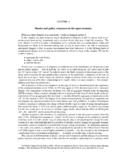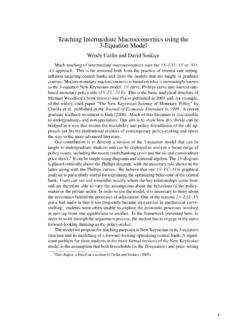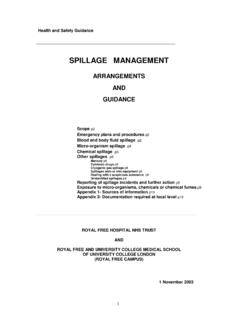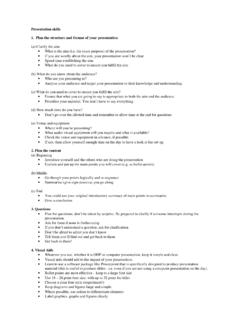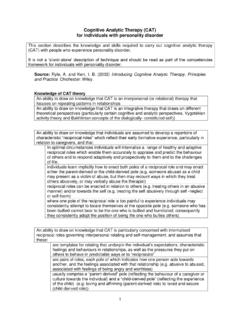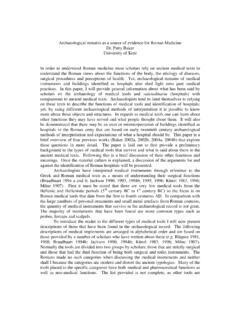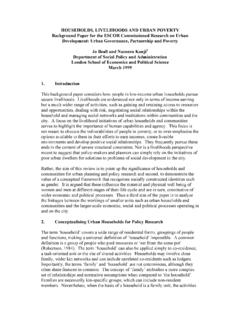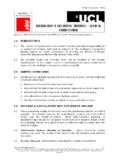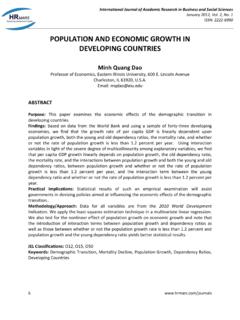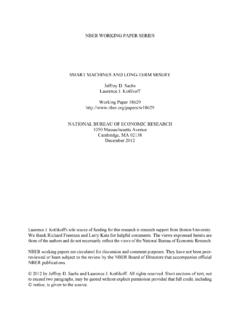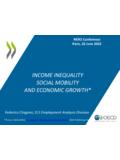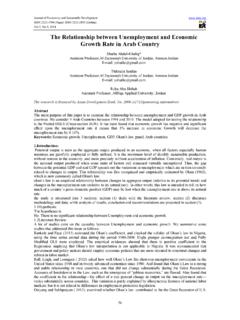Transcription of West German Growth and Institutions, 1945-90
1 west German Growth and institutions , 1945 -90 Wendy Carlin University College London For useful comments on earlier drafts I would like to thank Andrea Boltho, Nick Crafts, Barry Eichengreen, Andrew Glyn, Tony Nicholls, Karl-Heinz Paqu , Albrecht Ritschl and Gianni Toniolo - as well as participants at the CEPR conference on post-war Growth in Oxford in December 1993. For their help and advice I would also like to thank Werner Abelshauser, Bart van Ark, Steve Broadberry, Rolf Dumke, David Soskice, Frank Stille and Karin Wagner. 21. Introduction: west German post-war Growth in historical and comparative context Popular perceptions of west German economic Growth are polarized: either it is the miracle economy of the post-war era, the 'strong-man' of Europe or it is a sclerotic economy, typifying Europe's inflexibility in labour and capital markets relative to the United States.
2 One way of reconciling these apparently contradictory views is to depict west Germany as 'The Fading Miracle' as Giersch et al. (1992) have done. From this perspective, the miracle has long since gone and memories have lingered far behind the reality. But in Michel Albert's recent popular account of post-war capitalism (1992), Germany's reputation for dynamism and adaptability remains untarnished. One aim of this chapter is to put these contrasting interpretations into a longer term and explicitly comparative perspective. Throughout the chapter, Germany's performance will be compared with that of the other three large European economies, the UK, France and Italy. It is useful to begin by looking at attempts to identify a common OECD pattern of Growth over the long run and then at the extent to which west Germany fits this pattern. As a starting point two such studies are used to provide a benchmark for the assessment of German Growth .
3 First is an endogenous Growth model based on Scott (1989) and estimated by van der Klundert and van Shaik (1993; henceforth, KS) for a group of 8 OECD economies from 1870 and extended to 16 for the post-war period. The second study is that of Dowrick and Nguyen (1989; henceforth, DN) which is a Solow-type model with exogenous technical progress, augmented with catch-up estimated for a group of 24 OECD countries for the post-war period. In KS's analysis, a strikingly simple Growth equation is estimated where the Growth of GDP is explained by the investment share, the Growth of labour input 3measured by man-hours and catch-up. Catch-up is found to be significant for 1950-60 and 1960-73. Investment appeared to be less effective in generating Growth only in Australia in their primary sample and in Scandanavia in the larger sample. The disappearance of the catch-up effect accounts for the bulk of the slow-down after 1973 in the KS equation.
4 Thus neither weaker investment nor lower effectiveness of investment can account for the post-73 slow-down in the OECD. They interpret this as signifying that the major economies have experienced a 'return to normal' after the exceptional period of the post-second world war years. By contrast, Dowrick and Nguyen find that TFP catch-up persists in the post-73 period and that lower investment is largely responsible for the Growth slowdown. Turning to Germany, it is the only country in the KS sample for which there is a large positive residual for the 1950s (see Table 1). Their equation suggests that more than half of German Growth in the 1950s is not accounted for by investment and labour force Growth . In addition to the common feature of 'catch-up', it is necessary to introduce German -specific factors in order to understand this period. Dowrick and Nguyen come to a very similar conclusion: Germany's per capita Growth of GDP was 2 percentage points above the sample average for 1950-60 once account was taken of catch-up and cyclical bias, capital and employment deepening.
5 4 Table 1 The proximate causes of Growth , Germany (from van der Klundert and van Shaik 1993) GDP, labour input measured by hours. Period Actual Growth rate Explained by Unexplained Investment share Growth rate of employee-hours Catch-up 1870-1890 1890-1913 1913-1929 1929-1938 1950-1960 1960-1973 1973-1989 Source: Van der Klundert and van Shaik (1993) Table 5.
6 In terms of the polarized characterization of German performance referred to earlier, both cross-country studies are agnostic about Growth after 1973. In KS, after the high positive residual for 1950-60, Germany has a small negative residual for the rest of the golden age (1960-73) and a small positive one for the post-73 years. In DN, unexplained Growth virtually disappears for 1960-73 and is percentage points above the OECD average for the third period. Compared with the other three large European economies, DN find that Germany's performance is well above that 5of the other three for the 1950s, below France and Italy for 1960-73 and above all three for the post 1973 period. To sum up, the broad picture about German post-war Growth which emerges is that the 1950s were quite exceptional in terms both of German historical experience from 1870 and in comparison with other countries. From 1960 to 1973, the contribution of capital and catch-up are very similar to their values for the 1950s (in KS) but Growth is markedly lower.
7 Labour input declines and the high positive residual turns negative. This suggests a period of capital deepening as the economy adapts to labour shortage. The two studies differ in their interpretation of the relative role of investment and catchup in accounting for the generalized post-73 slowdown but concur in finding that German performance was just above average, whether the reference group is the OECD or Germany's large European From the perspective of convergence, it is striking that Germany has continued to narrow the total economy productivity gap to the US over the entire post-war period. However the aggregate data hides a sharp divergence between the relative dynamism of the manufacturing and non-manufacturing sectors from 1979 (see Table 2). The impression from the labour productivity comparisons is confirmed in a cross-country regression analysis of sectoral TFP Growth in OECD countries in which Rowthorn finds that Germany has a positive residual for the three non-manufacturing sectors and a negative one for manufacturing (1992).
8 Yet manufacturing industry has been traditionally viewed as the engine of Growth in Germany. It is a technologically progressive sector in the terminology of Baumol et al. (1989). Table presents the Growth accounts for manufacturing for Germany and the three other large European economies. Germany's TFP performance in manufacturing is well below that of France and Italy in the 1960-73 period and even falls below that of the UK from 1973. Comparisons which begin from 1979 eliminate 6the UK's particularly poor performance in the 1970s and present an impression of an even greater weakness of German manufacturing. The hourly labour productivity level data presented in Figure 1 paint a similar picture. Table 2 Convergence of value added per hour in manufacturing and the total economy, 1950-1990 US=100 GERMANY 1950 1960 1973 1979 1990 Total economy Manufacturing Source: van Ark and Pilat (1993) Table 5 However, judgements of the decline of German manufacturing prowess should be postponed until a closer examination is made of the character of productivity improvements in the 1980s.
9 The data in Table 3 highlight the feebleness of output Growth in manufacturing in both France and the UK, along with the extreme weakness of investment in the UK. The German data present a mixed picture: more limited labour shedding than in the other countries and average capital stock Growth . Germany's competitiveness as measured by its performance in export markets has not weakened in the post 1973 period as would have been expected on the basis of the productivity data. This suggests that an analysis of the relationship between Growth performance and other indicators of performance in manufacturing is called for. 7 8 Table 3 Growth accounting for manufacturing, Germany, France, Italy, UK.
10 Germany France Italy UK 1950-61 Output Capital Labour TFP 1961-73 Output Capital Labour TFP
